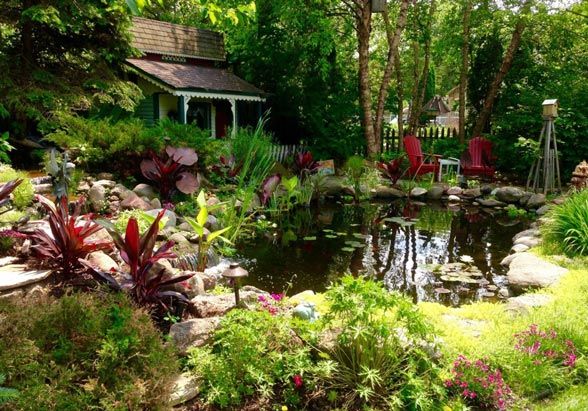When it comes to landscaping, creating a garden that attracts and supports wildlife is not only aesthetically pleasing but also environmentally responsible. Sustainable landscaping practices can help preserve ecosystems and provide a suitable habitat for various species of birds, insects, and other animals. In this article, we will explore some tips and strategies to create a garden for wildlife that promotes biodiversity while maintaining a sustainable approach.
1. Choosing Native Plants
One of the most important aspects of creating a wildlife-friendly garden is selecting native plants. Native plants are naturally adapted to the local environment and provide essential food sources, shelter, and nesting sites for local wildlife. By incorporating a variety of native species in your garden, you can attract a diverse range of birds, butterflies, bees, and other beneficial insects.
When choosing native plants, consider their specific requirements such as moisture levels, sun exposure, and soil type. Research the native plants that are indigenous to your region and focus on building a garden that mimics the natural landscape of the area. This way, you can create a suitable habitat that encourages wildlife to thrive.
2. Creating Shelter and Nesting Sites
Wildlife need suitable shelter and nesting sites to feel safe and secure. Incorporating various features in your garden can provide these important elements. Consider adding birdhouses, bat boxes, and bee hotels to offer shelter and roosting spaces. Leave deadwood, fallen leaves, and hollow logs untouched as these can provide natural habitats for insects, amphibians, and small mammals.
Creating a diverse range of vegetation heights, from tall trees to shrubs and ground covers, will offer hiding places and nesting opportunities for different animal species. These features not only enhance the wildlife experience but also contribute to the overall aesthetics of your garden.
3. Water Features
Having a water source in your garden is vital for attracting wildlife. Install a bird bath, a small pond, or even a rain garden to provide a fresh water supply. Water features not only attract birds but also amphibians and beneficial insects like dragonflies. Ensure the water is clean and regularly maintained to avoid potential health issues for the wildlife that visits your garden.
4. Minimizing Chemical Usage
Sustainable landscaping practices include minimizing the use of harmful chemicals. Pesticides and herbicides can have detrimental effects on wildlife, disrupting the ecosystem balance. Instead, opt for natural pest control methods such as introducing beneficial insects, using organic compost and mulch, or practicing companion planting to deter pests.
Embracing organic and sustainable gardening methods not only protects wildlife but also safeguards your own health and the environment from unnecessary exposure to harmful chemicals.
5. Providing Food Sources
Creating a thriving ecosystem means ensuring a consistent food supply for wildlife. Incorporate plants that produce seeds, berries, or nectar as they serve as valuable food sources for birds, butterflies, and pollinators. Consider planting a variety of flowering plants that bloom at different times of the year to provide continuous food sources.
In addition to plants, you can also hang bird feeders to offer supplementary food during certain seasons. These feeders can attract a wide range of bird species, bringing movement and liveliness to your garden.
Conclusion
By adopting sustainable landscaping practices, you can transform your garden into a haven for wildlife while reducing your environmental footprint. Choosing native plants, providing shelter and nesting spaces, incorporating water features, minimizing chemical usage, and offering a steady food supply are all essential elements in creating a garden that supports biodiversity. Not only will you be contributing to the conservation of local wildlife, but you will also have the pleasure of enjoying a beautiful, vibrant garden that teems with life.


